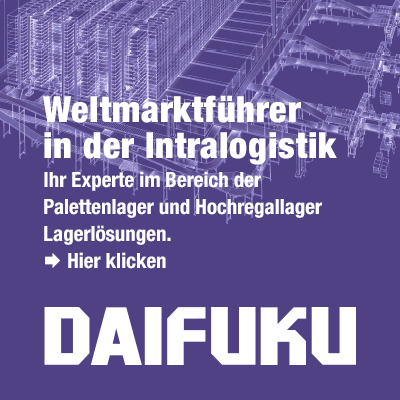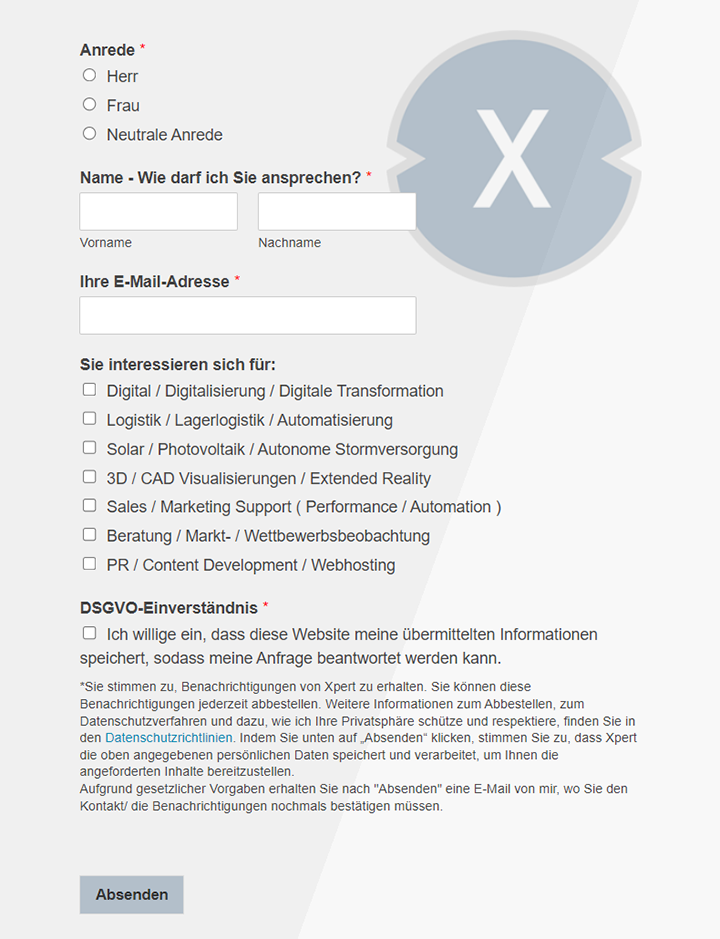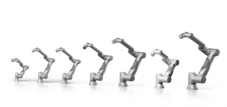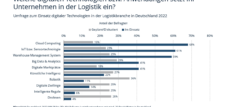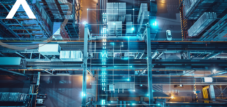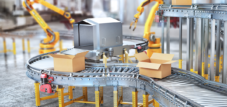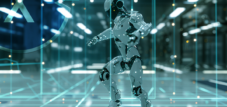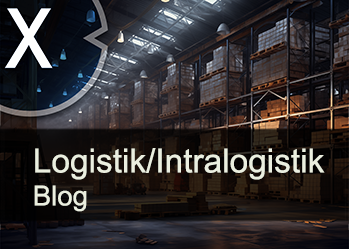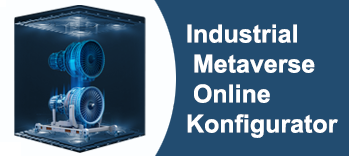Amazon, Zebra Technologies and Ambi Robotics: AI and robotics improve warehousing through intelligent automation
Xpert pre-release
Language selection 📢
Published on: February 3, 2025 / update from: February 3, 2025 - Author: Konrad Wolfenstein

Amazon, Zebra Technologies and Ambi Robotics: AI and robotics improve warehousing through intelligent automation - Image: Xpert.Digital
Intelligent automation: The future of logistics is now beginning
The future of warehousing: AI and robotics as drivers of efficiency
The logistics industry is located in the middle of a profound change. Artificial intelligence (AI) and robotics revolutionize warehousing through intelligent automation that increases efficiency, reduces costs and improves working conditions. Companies such as Amazon, Zebra Technologies and Ambi Robotics rely on different but additional technologies to optimize warehouse processes. But the developments go far beyond individual companies - they are part of a global trend that transforms the entire supply chain.
Amazon: AI-based warehouse optimization
Amazon has been relating to AI algorithms and advanced robotics for years to accelerate the flow of goods in its logistics centers and maximize productivity. A central breakthrough is the AR picking algorithm, which reduces the movements of the robots by up to 62 %. This leads to annual savings of around $ 500 million and enables faster processing of orders.
Ki-based logistics key elements on Amazon:
- AI-supported sorting machines: These analyze inventory in real time, products recognize products faster and reduce error rates, which significantly shortens the delivery times.
- Use of humanoid robots: Amazon is currently testing humanoid robots like “Digit”, which can flexibly react to changes in the warehouse structure and take on repetitive tasks.
- Machine learning for warehouse management: By using AI instead of manual scannens, the inventory management becomes more precise and efficient. Real -time data enable dynamic adjustment of the inventory to current market needs.
Amazon's strategy shows that AI-controlled logistics not only brings efficiency increases, but also enables a completely new way of working. By working together collaboratively, people and machines become processes faster, safer and more economical.
Zebra Technologies: Cloud-based AI solutions for more transparency
Zebra Technologies pursues a holistic approach to make warehouse processes through machine learning and cloud -based solutions to make more transparent and resistant. Especially in times of global supply chain crises, the demand for flexible and adaptive systems increases.
Technologies in use:
- Machine vision and predictive analysis: through AI-controlled image recognition, processes are analyzed in real time so that inventory can be optimally managed. 94 % of decision -makers plan investments in machine learning to increase inventory and use personnel more efficiently.
- Autonomous mobile robots (AMRS) from Fetch Robotics: These self -driving robots automate and reduce the need for manual transport processes, which saves time and costs.
- RFID and real-time location systems: The combination of sensor technologies and intelligent software solutions improves the traceability of goods and ensures higher existence.
By using cloud -based analyzes, Zebra Technologies can flexibly react to changes in the market and enable companies to optimize their warehouses in advance.
Ambi Robotics: Revolutionary stacks with ambistack
Ambi Robotics has developed an innovative, AI-controlled pallet animal solution with ambistack, which optimizes the stacking of articles. With the help of Sim2Real Reinforcement Learning, packaging is intelligently arranged - similar to a three -dimensional tetris.
Main advantages of Ambistack:
- AI vision systems analyze the size, shape and position of packages to efficiently use the available space.
- Flexible integration into various storage configurations and easy connection to existing Warehouse Management Systems (WMS).
- Cost savings from optimized use of space that reduces transport costs and increases the degree of automation.
The solution from Ambi Robotics shows that AI not only accelerates work processes, but also uses the storage capacity more effectively and improves the environmental balance.
Common advantages and future trends
The progress in AI-based warehousing is not limited to individual companies-they are part of a comprehensive change in the logistics industry. The most important trends include:
1. Human robot collaboration
AI systems are not intended as a replacement for employees, but as support. Robots take on monotonous or physically stressful tasks, while people can concentrate on monitoring or coordinating activities. This leads to safer jobs and increased productivity.
2. Data-driven decisions
Real -time analyzes enable predictive maintenance and dynamic process adjustments. Companies can make precise predictions about inquiries and better control their inventory to avoid excess stands or bottlenecks.
3. Scalability and flexibility
Cloud -based solutions and modular robot systems enable companies to adapt quickly to market requirements. Care can be expanded or converted as required without having to make large investments in new infrastructures.
4. Sustainability through efficiency increase
Automated warehouses contributes to the reduction of energy consumption and CO2 emissions. Optimized transport routes and more efficient use of space minimize environmental pollution and reduce operating costs.
5. AI-based personnel deployment planning
Through intelligent algorithms, workers can be used specifically where they create the greatest added value. This improves job satisfaction and reduces idle times while the efficiency is maximized.
The future of warehousing is smart and automated
The innovations of companies such as Amazon, Zebra Technologies and Ambi Robotics show that AI and robotics fundamentally transform warehousing. Faster delivery times, higher precision and cost savings are just a few of the advantages that arise from the use of intelligent automation systems.
But these developments go beyond pure efficiency increases - they also create a new way of working together between people and the machine. While robot repetitive tasks take on, people keep control of strategic decisions and monitoring processes.
The future of warehousing is not only automated, but also adaptable, sustainable and intelligently networked. Companies that invest in these technologies early will have a decisive competitive advantage in the long term.
Xpert partner in warehouse planning and construction
AI on the pulse of logistics: the power behind flexible and secure warehouses - background senses
The further development of warehousing: AI and robotics shape the future of logistics
The logistics, the backbone of global trade, experience a profound change. AI and robotics are the driving forces of this transformation, which goes far beyond simple automation. Through intelligent automation, warehouses not only make warehouses more efficient, but also more flexible, safer and cheaper. Companies such as Amazon, Zebra Technologies and Ambi Robotics are at the top of this revolution and use different but complementary technologies to lead warehousing into a new age. This development is not only important for large companies, but also has the potential to change the entire supply chain, from production to end customers.
Amazon: AI as the heart of warehouse logistics
Amazon, the e-commerce giant, recognized the role of AI in warehousing early on and uses it on a large scale. The company operates a huge network of logistics centers in which millions of articles are moved every day. Amazon has prompted the challenge of efficiently manage these quantities to make extensive investments in AI and robotics.
One of the most remarkable successes is the development of AI-based picking algorithms. These algorithms, in particular the so-called AR picking algorithm, have changed the way in which robots move in the warehouses. Instead of navigating arbitrarily through the corridors, the AI systems analyze the optimal route to reach items and thus reduce the distance covered by an impressive 62 %. This efficiency gain not only leads to faster picking times, but also to significant cost savings. It is estimated that Amazon saves around $ 500 million annually through this technology.
At Amazon, the AI is not limited to the path optimization. AI-supported sorting machines identify inventory at lightning speed and automatically forward it to the right places. This automation reduces the processing times considerably and ensures that orders arrive at the customer faster. In addition, the AI is able to improve warehouse management by analyzing data in real time and thus keeping an overview of inventory and item movements. This enables forward -looking planning and reduces the risk of bottlenecks or excesses.
Another interesting aspect is the research of humanoid robots like “Digit”. These robots, which have human -like forms and skills, could enable even more flexible adaptation to different warehouses and tasks in the future. Digit and similar robots are currently being tested in pilot projects to test their skills in dealing with complex or unusual objects. Even if your broad introduction is still in the future, you will show the potential for even more progressive automation.
Amazon also focuses on machine learning to replace the manual scanning process. The automated recording of data reduces human errors and efficiency increases. This enables more precise and reliable warehouse management, which in turn forms the basis for faster and more efficient supply chains.
Zebra Technologies: Transparency and Resilience by Cloud-based AI
Zebra Technologies follows a slightly different approach and focuses on the provision of solutions based on machine vision and predictive analysis. These technologies are designed to make warehouse processes more transparent and resistant. A special focus is on the integration of AI into the cloud. This makes it possible to analyze data from different storage locations in real time and thus gain extensive insights into the processes.
The importance of machine learning is illustrated by a study in which 94 % of the decision -makers provide information to want to invest in machine learning in order to optimize their workforce and increase the accuracy. This shows that the market has recognized the value of AI in warehousing and is ready to invest in these technologies.
Zebra mainly relies on autonomous mobile robots (AMRS), which were developed by Fetch Robotics. These robots can autonomously navigate through the warehouses and pick goods without human interventions being necessary. This automation reduces manual transport processes and increased productivity. The AMRs can dynamically adapt to changed environments and optimize their routes independently. As a result, they can also be used in complex and dynamic camps in which the conditions change constantly.
Another important element of zebra solutions is the use of sensor technologies such as RFID (radio frequency identification) and real-time location systems. These technologies make it possible to track the path of goods in the warehouse in real time. This improves traceability and reduces the risk of losses or confusion. This is particularly important in complex supply chains in which many different players are involved.
Ambi Robotics: Revolutionary stacks with Sim2Real Reinforcement Learning
Ambi Robotics enters the stage with an innovative solution called Ambistack, which focuses on optimizing the stacking of articles. This AI-controlled pallet animal solution uses an advanced technology that is referred to as Sim2Real Reinforcement Learning. Here the AI learns in a virtual simulation and then transfers the learned to the real world.
The ambistack system analyzes size, shape and position of packages using AI vision systems in order to stack them optimally. This technology is reminiscent of the classic video game Tetris, in which geometric shapes are arranged in such a way that as little space as possible is wasted. This intelligent stacking is better used to use the available space in the warehouses, which in turn increases the storage capacity.
Another advantage of the ambistack system is its flexibility. It can be adapted to various storage configurations and seamlessly integrated into existing ERP systems (WMS). This flexibility is particularly important because the requirements of warehouse logistics can vary greatly depending on the industry and companies.
Due to the more efficient use of space, not only the storage costs are reduced, but also the transport costs. Since more goods can be stacked on a pallet, fewer pallets are required, which leads to fewer transports. In addition, ambistack repetitive tasks that have so far been done by humans. This automation relieves the employees and enables them to concentrate on more demanding tasks.
Common advantages and trends: the future of warehousing
The innovations of Amazon, Zebra Technologies and Ambi Robotics show that AI and robotics fundamentally change warehousing. However, there are also common advantages and trends that arise through these developments:
Human robot collaboration: Contrary to the fear that robots will destroy jobs, it turns out that AI systems serve as support for the employees. The AI takes on repetitive and physically exhausting tasks, while people can concentrate on more demanding and creative activities. A human-robot collaboration is created that optimally uses the strengths of both sides.
Data -driven decisions: real -time analyzes are a central element of modern warehousing. By analyzing data, companies can dynamically adjust their processes and plan forward -looking. This enables the optimization of inventory, avoiding bottlenecks and reducing costs. Predictive maintenance is also becoming increasingly important. AI systems can recognize anomalies in the machines and plan maintenance before failure occurs. This reduces downtimes and increases efficiency.
Scalability: Cloud -based solutions and modular robot technologies enable companies to adapt their storage capacities quickly and flexibly to the market requirements. This is particularly important in a rapidly changing world in which the demand for products can fluctuate greatly. Companies can now scale their storage capacities without having to make massive investments in new buildings or facilities.
These innovations show that AI and robotics are not only short -term trends, but rather form the basis for sustainable and efficient storage. The warehouses are becoming increasingly development of fast, precise and cost -effective nodes in global supply chains. They are crucial for the success of companies and the satisfaction of customers.
The effects on the labor market and society
The use of AI and robotics in warehousing not only has economic, but also social effects. It is important to understand and shape these effects in order to optimally use the advantages of technology and to minimize the negative consequences.
An important aspect is the change in jobs. Automation makes certain manual activities unnecessary, while new jobs are created in the field of programming, maintenance and monitoring of AI systems and robots. This requires an adaptation of the educational and further education systems to prepare employees for the new requirements. It is crucial that the employees acquire the skills they need to deal with the new technologies and benefit from them.
In addition, it is important to discuss the ethical questions associated with the use of AI. How is it ensured that the AI systems work fairly and transparently? How are the data of the employees protected? These questions must be answered in order to gain the trust of society into the new technologies.
Increase efficiency, reduce costs: How AI transforms logistics
The development of AI and robotics in warehousing is still at the beginning. We will experience further innovations and progress in the coming years. The integration of artificial intelligence will penetrate deeper into all areas of logistics and lead to even more efficient, more flexible and more sustainable systems.
We can assume that the robots become more intelligent, more flexible and autonomous. You will be able to take on even more complex tasks and to better adapt to changed environments. Human robot collaboration will also continue to increase and lead to new forms of cooperation.
The data analysis is also becoming increasingly important. By analyzing large amounts of data, companies will be able to make even more precise forecasts and to optimize their processes even better. This will lead to a further increase in efficiency and reduce costs.
In addition, sustainability will play an increasingly important role. Companies will increasingly try to make their processes more environmentally friendly and reduce their CO2 footprint. AI and robotics can help save energy, reduce waste and optimize transport routes.
Overall, the future of the warehouses of AI and robotics is characterized. These technologies have the potential to fundamentally change logistics and to contribute to a more efficient, more flexible and more sustainable world. It is up to us to make these technologies responsible and optimally use their advantages.
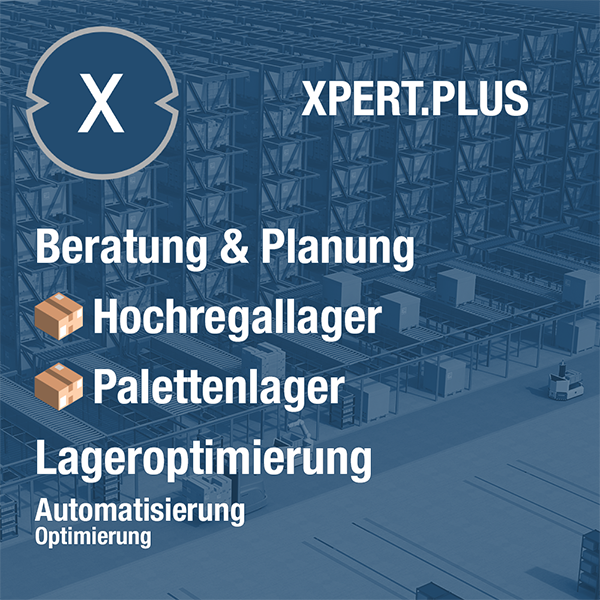
Xpert.Plus warehouse optimization - high-bay warehouses such as pallet warehouses consulting and planning
We are there for you - advice - planning - implementation - project management
☑️ SME support in strategy, consulting, planning and implementation
☑️ Creation or realignment of the digital strategy and digitalization
☑️ Expansion and optimization of international sales processes
☑️ Global & Digital B2B trading platforms
☑️ Pioneer Business Development
I would be happy to serve as your personal advisor.
You can contact me by filling out the contact form below or simply call me on +49 89 89 674 804 (Munich) .
I'm looking forward to our joint project.
Xpert.Digital - Konrad Wolfenstein
Xpert.Digital is a hub for industry with a focus on digitalization, mechanical engineering, logistics/intralogistics and photovoltaics.
With our 360° business development solution, we support well-known companies from new business to after sales.
Market intelligence, smarketing, marketing automation, content development, PR, mail campaigns, personalized social media and lead nurturing are part of our digital tools.
You can find out more at: www.xpert.digital - www.xpert.solar - www.xpert.plus



